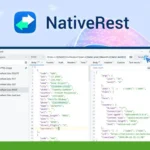Understanding your website’s visitor behavior is crucial for optimizing user experience and driving business growth. This comprehensive guide on visitor tracking will provide you with invaluable insights into how to track visitors, the benefits of unlimited website tracking, and how to leverage analytics to boost your website’s performance. Whether you’re a seasoned marketer or a website owner, this article is packed with actionable tips and strategies that will make a significant impact on your online presence.
Article Outline
- What is Visitor Tracking and Why is it Important?
- How Does Visitor Tracking Work?
- Key Features of Effective Visitor Tracking Tools
- Why Choose Unlimited Website Tracking?
- How to Set Up Visitor Tracking on Your Website
- Understanding Visitor Behavior Through Analytics
- The Benefits of Conversion Tracking
- How to Use Visitor Tracking for SEO Optimization
- Real-Time Visitor Tracking: See Exactly What’s Happening
- Choosing the Right Visitor Tracking Tool for Your Business
What is Visitor Tracking and Why is it Important?
Visitor tracking is the process of monitoring and analyzing the behavior of visitors on your website. By tracking visitors, you can gather valuable data on how users interact with your site, which pages they visit, how long they stay, and what actions they take. This information is crucial for understanding user preferences, optimizing the user experience, and improving your website’s performance.
Visitor tracking is important because it allows you to make data-driven decisions. For example, if you notice that visitors are leaving your site quickly, you can investigate the reasons and make necessary changes to improve retention. Additionally, visitor tracking helps you identify high-performing pages and replicate their success across your site.
How Does Visitor Tracking Work?
Visitor tracking works by using various tools and technologies to collect data on user interactions. These tools often use cookies to monitor user behavior and track their journey across your website. The data collected includes metrics such as page views, session duration, bounce rate, and conversion rates.
The process typically involves embedding tracking codes or scripts on your website. When a visitor lands on your site, the tracking code collects data and sends it to an analytics platform. This platform then processes the data, providing you with detailed reports and insights into your visitors’ behavior.
Key Features of Effective Visitor Tracking Tools
Effective visitor tracking tools come with a range of features designed to provide comprehensive insights into user behavior. Some of the key features include:
- Real-Time Analytics: This feature allows you to monitor visitor activity as it happens, providing immediate insights into user behavior and website performance.
- Heatmaps: Heatmaps visually represent where visitors are clicking, scrolling, and spending the most time on your site. This information is invaluable for optimizing page layouts and improving user experience.
- Session Recordings: Session recordings let you watch real-time replays of visitor interactions on your site, helping you identify usability issues and areas for improvement.
- Conversion Tracking: This feature tracks the actions visitors take that lead to conversions, such as filling out a form or making a purchase. Understanding conversion paths helps you optimize your marketing strategies.
Why Choose Unlimited Website Tracking?
Unlimited website tracking offers several advantages over traditional tracking methods. With unlimited tracking, you can monitor an unrestricted number of visitors, pages, and events on your site. This ensures that you capture all relevant data, providing a complete picture of user behavior.
Unlimited tracking is particularly beneficial for large websites with high traffic volumes. It allows you to gather comprehensive data without worrying about hitting tracking limits. This level of detail is essential for making informed decisions and optimizing your website’s performance.
How to Set Up Visitor Tracking on Your Website
Setting up visitor tracking on your website involves a few simple steps:
- Choose a Tracking Tool: Select a visitor tracking tool that meets your needs. Popular options include Google Analytics, Hotjar, and Crazy Egg.
- Install the Tracking Code: Once you’ve chosen a tool, you’ll need to install the tracking code on your website. This usually involves copying a snippet of code and pasting it into the header or footer of your site.
- Configure Your Settings: Customize your tracking settings to match your specific requirements. This may include setting up goals, filters, and custom reports.
- Monitor and Analyze Data: After setting up the tracking code, start monitoring the data collected. Use the insights gained to make informed decisions and optimize your website’s performance.
Understanding Visitor Behavior Through Analytics
Analytics tools provide a wealth of information about visitor behavior. By analyzing this data, you can gain insights into how users interact with your site, what content they find most engaging, and where they encounter obstacles.
Key metrics to monitor include:
- Page Views: The number of times a page is viewed by visitors.
- Session Duration: The average length of time visitors spend on your site.
- Bounce Rate: The percentage of visitors who leave your site after viewing only one page.
- Conversion Rate: The percentage of visitors who complete a desired action, such as making a purchase or signing up for a newsletter.
By understanding these metrics, you can identify areas for improvement and implement changes to enhance the user experience.
The Benefits of Conversion Tracking
Conversion tracking is a crucial aspect of visitor tracking that focuses on monitoring the actions visitors take that lead to conversions. This includes actions such as completing a purchase, filling out a contact form, or signing up for a newsletter.
The benefits of conversion tracking include:
- Improved Marketing Strategies: By understanding which marketing efforts lead to conversions, you can optimize your campaigns for better results.
- Enhanced User Experience: Conversion tracking helps you identify and remove obstacles that prevent visitors from converting, improving the overall user experience.
- Increased ROI: By focusing on strategies that drive conversions, you can maximize your return on investment and grow your business.
How to Use Visitor Tracking for SEO Optimization
Visitor tracking can also play a significant role in SEO optimization. By analyzing visitor behavior, you can identify which keywords and content are driving traffic to your site and optimize your SEO strategy accordingly.
Key aspects to focus on include:
- Traffic Sources: Understanding where your traffic is coming from helps you identify the most effective channels and focus your SEO efforts accordingly.
- Content Performance: Analyzing which pages and content perform best allows you to create more of what your audience loves, boosting your SEO rankings.
- User Engagement: Monitoring metrics such as bounce rate and session duration helps you understand how engaged your visitors are with your content, allowing you to make improvements where necessary.
Real-Time Visitor Tracking: See Exactly What’s Happening
Real-time visitor tracking provides immediate insights into user behavior, allowing you to see exactly what’s happening on your site as it occurs. This feature is incredibly useful for monitoring the effectiveness of marketing campaigns, identifying issues, and making quick adjustments to improve performance.
Real-time tracking tools provide data on:
- Current Visitors: The number of visitors currently on your site.
- Active Pages: Which pages are being viewed in real-time.
- User Actions: Actions visitors are taking, such as clicks, form submissions, and purchases.
By leveraging real-time data, you can make informed decisions and optimize your website’s performance on the fly.
Choosing the Right Visitor Tracking Tool for Your Business
Selecting the right visitor tracking tool is crucial for gaining accurate insights into user behavior and optimizing your website’s performance. When choosing a tool, consider the following factors:
- Features: Ensure the tool offers the features you need, such as real-time analytics, heatmaps, session recordings, and conversion tracking.
- Ease of Use: The tool should be user-friendly and easy to set up, allowing you to start tracking visitors quickly.
- Integration: Choose a tool that integrates seamlessly with your existing systems and platforms.
- Cost: Consider the cost of the tool and whether it fits within your budget. Some tools offer free plans with limited features, while others require a subscription.
Popular visitor tracking tools include Google Analytics, Hotjar, Crazy Egg, and Mixpanel. Each tool has its own strengths and weaknesses, so it’s important to choose one that aligns with your specific needs and goals.
Summary of Key Points
- Visitor tracking is essential for understanding user behavior and optimizing your website’s performance.
- Effective visitor tracking tools offer features such as real-time analytics, heatmaps, session recordings, and conversion tracking.
- Unlimited website tracking provides comprehensive data without restrictions, making it ideal for large websites with high traffic volumes.
- Setting up visitor tracking involves choosing a tool, installing the tracking code, configuring settings, and monitoring data.
- Analyzing visitor behavior through analytics helps you identify areas for improvement and make data-driven decisions.
- Conversion tracking provides insights into the actions visitors take that lead to conversions, helping you optimize marketing strategies and improve ROI.
- Visitor tracking can be used for SEO optimization by analyzing traffic sources, content performance, and user engagement.
- Real-time visitor tracking allows you to see exactly what’s happening on your site and make quick adjustments to improve performance.
- Choosing the right visitor tracking tool involves considering features, ease of use, integration, and cost.
By mastering visitor tracking, you can gain invaluable insights into your website’s performance, improve user experience, and drive business growth. Start leveraging the power of visitor tracking today and watch your online presence soar.


